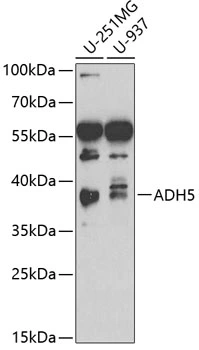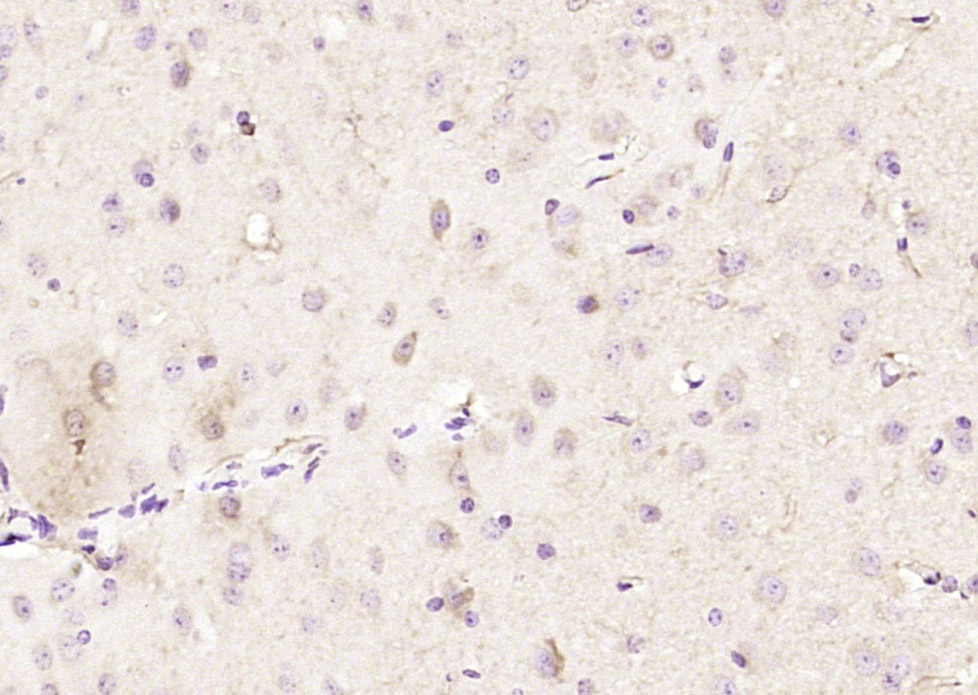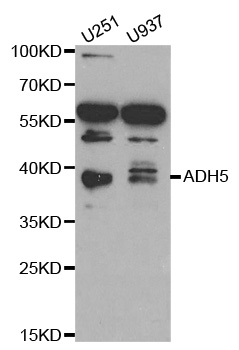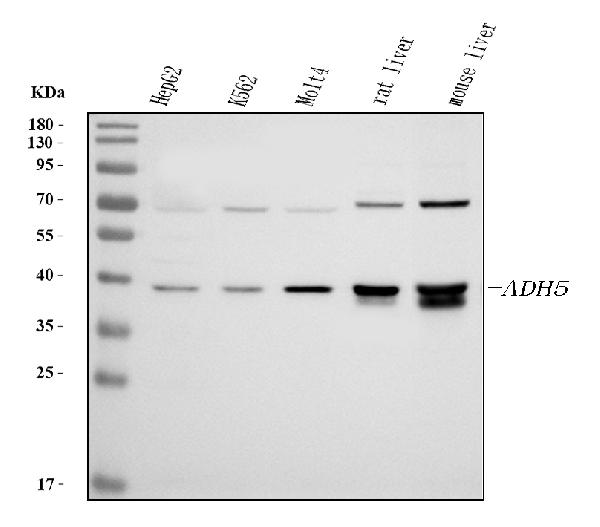
WB analysis of various sample lysates using GTX55494 ADH5 antibody. Dilution : 1:1000 Loading : 25microg per lane
ADH5 antibody
GTX55494
ApplicationsWestern Blot
Product group Antibodies
TargetADH5
Overview
- SupplierGeneTex
- Product NameADH5 antibody
- Delivery Days Customer9
- Application Supplier NoteWB: 1:500 - 1:2000. *Optimal dilutions/concentrations should be determined by the researcher.Not tested in other applications.
- ApplicationsWestern Blot
- CertificationResearch Use Only
- ClonalityPolyclonal
- ConjugateUnconjugated
- Gene ID128
- Target nameADH5
- Target descriptionalcohol dehydrogenase 5 (class III), chi polypeptide
- Target synonymsADH-3, ADHX, AMEDS, BMFS7, FALDH, FDH, GSH-FDH, GSNOR, HEL-S-60p, alcohol dehydrogenase class-3, S-(hydroxymethyl)glutathione dehydrogenase, S-nitrosoglutathione reductase, alcohol dehydrogenase (class III), chi polypeptide, alcohol dehydrogenase class chi chain, alcohol dehydrogenase class-III, epididymis secretory sperm binding protein Li 60p, formaldehyde dehydrogenase, glutathione-dependent formaldehyde dehydrogenase
- HostRabbit
- IsotypeIgG
- Protein IDP11766
- Protein NameAlcohol dehydrogenase class-3
- Scientific DescriptionThis gene encodes a member of the alcohol dehydrogenase family. Members of this family metabolize a wide variety of substrates, including ethanol, retinol, other aliphatic alcohols, hydroxysteroids, and lipid peroxidation products. The encoded protein forms a homodimer. It has virtually no activity for ethanol oxidation, but exhibits high activity for oxidation of long-chain primary alcohols and for oxidation of S-hydroxymethyl-glutathione, a spontaneous adduct between formaldehyde and glutathione. This enzyme is an important component of cellular metabolism for the elimination of formaldehyde, a potent irritant and sensitizing agent that causes lacrymation, rhinitis, pharyngitis, and contact dermatitis. The human genome contains several non-transcribed pseudogenes related to this gene. [provided by RefSeq, Oct 2008]
- Storage Instruction-20°C or -80°C,2°C to 8°C
- UNSPSC12352203







